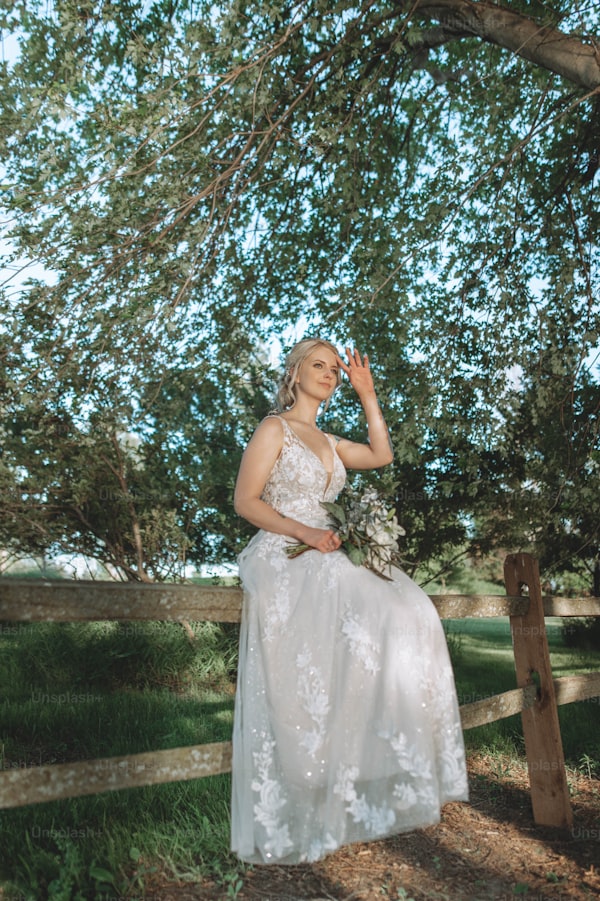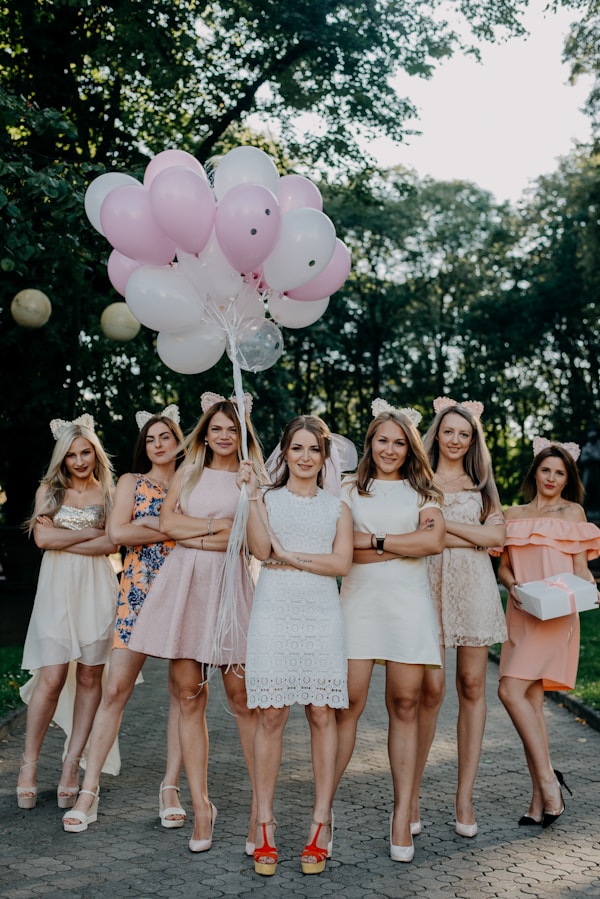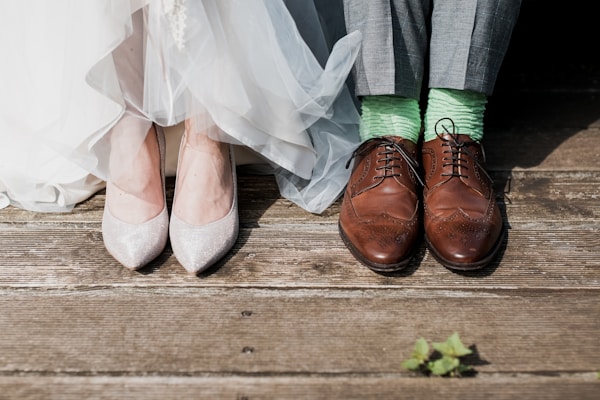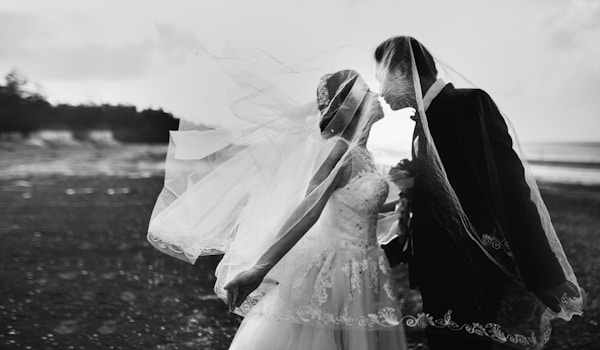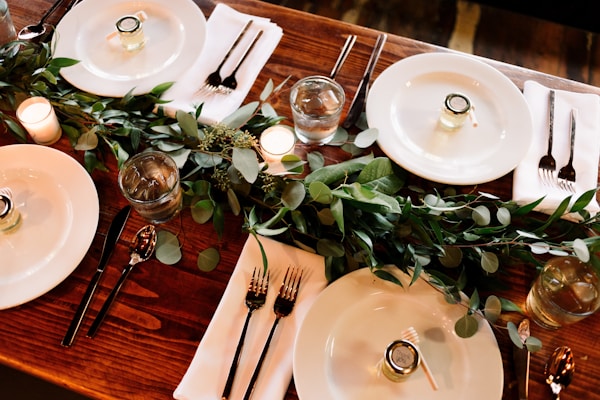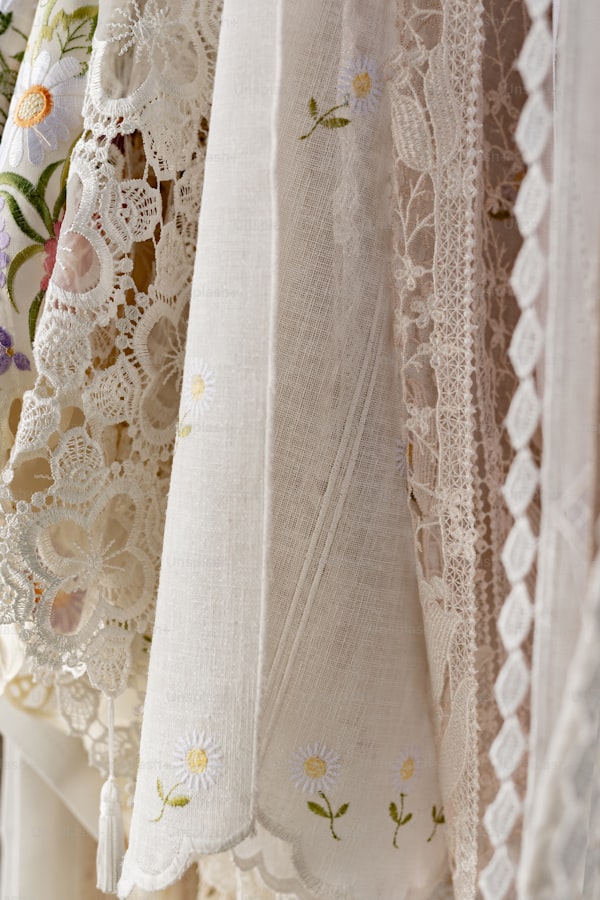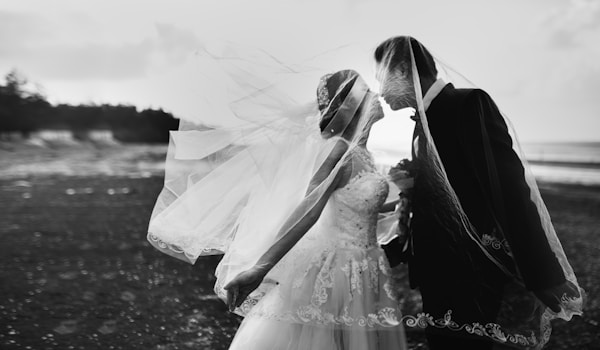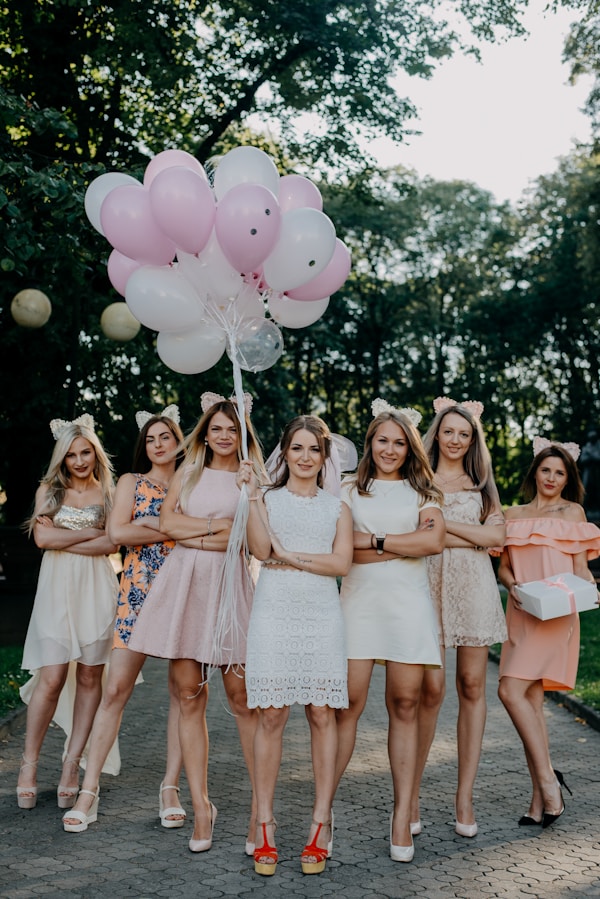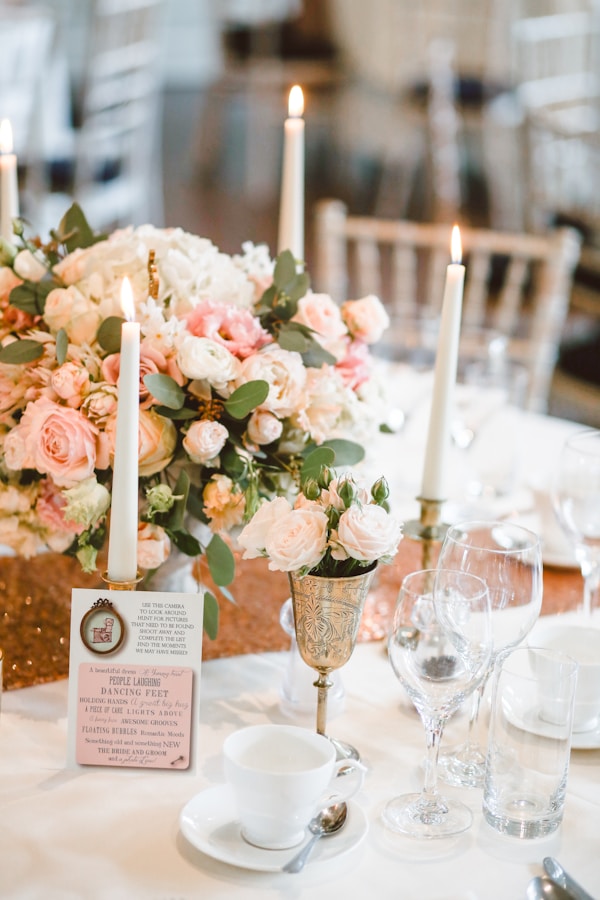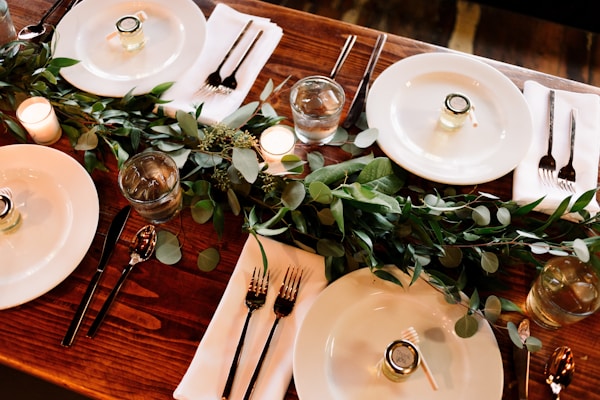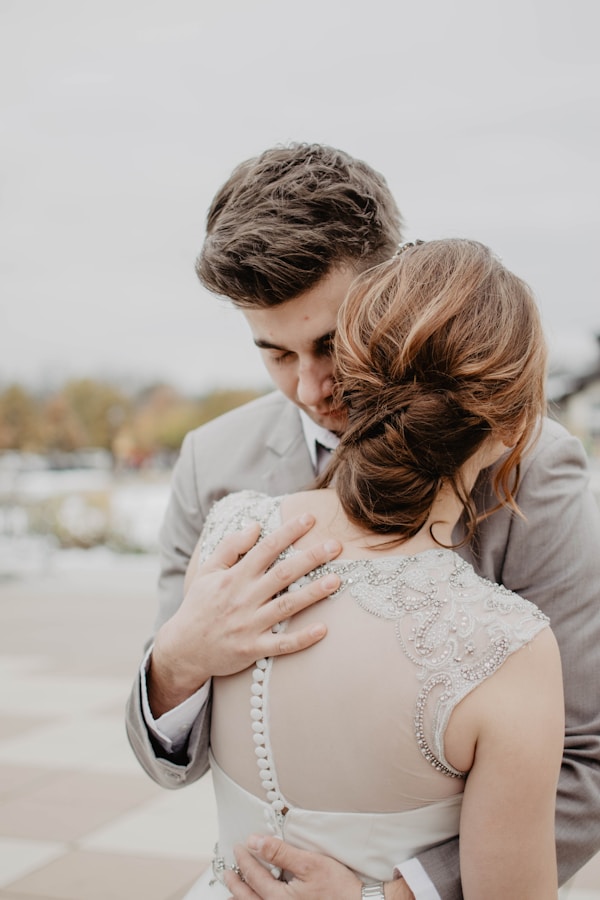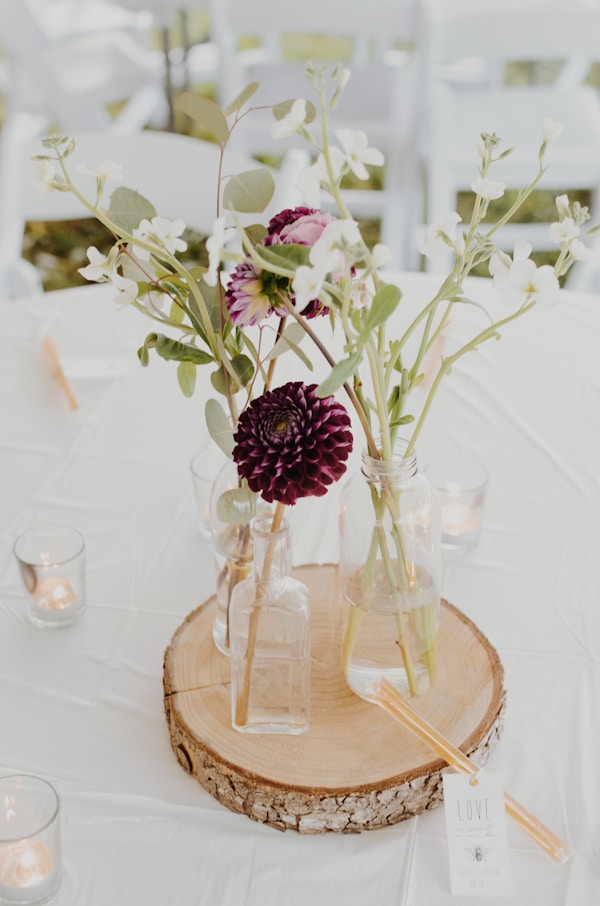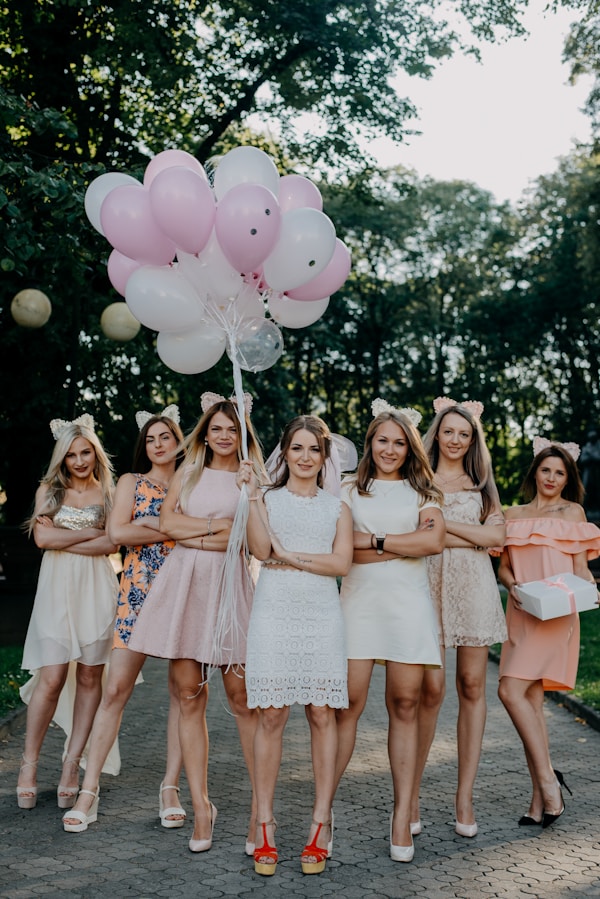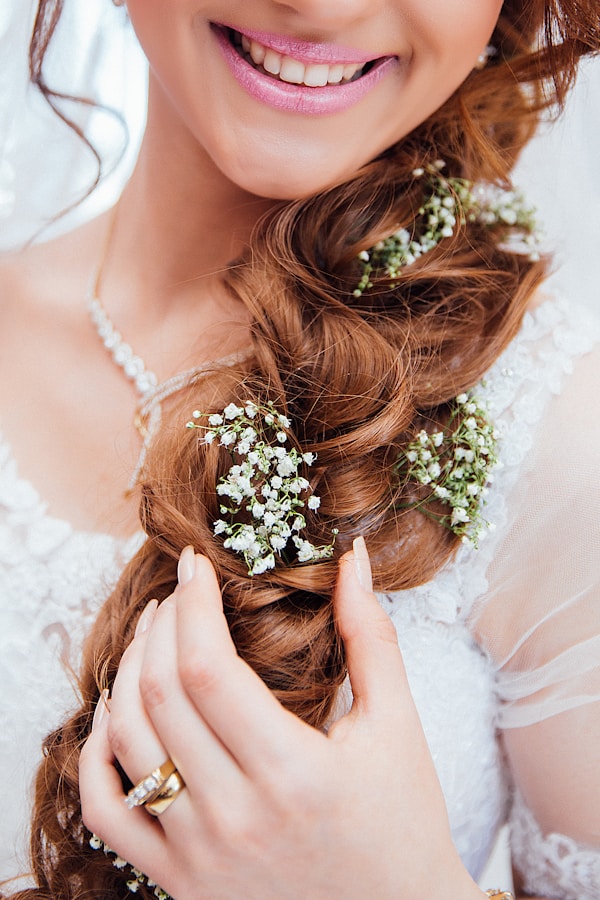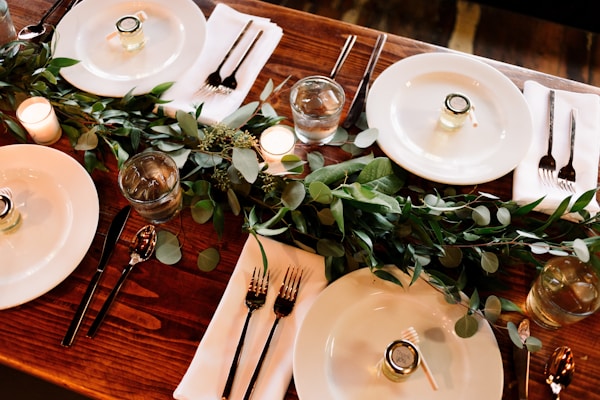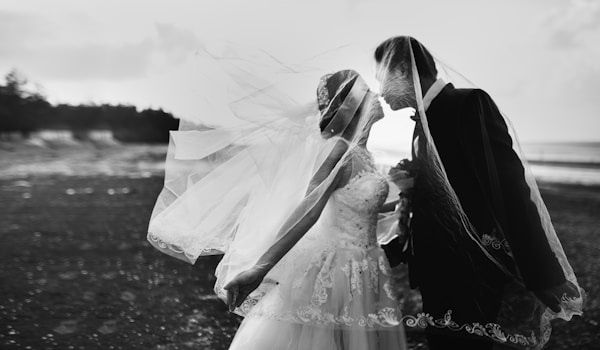How to Keep Your Wedding Dress Pristine During Outdoor Photography
Your wedding day is one of the most important moments of your life, and capturing those memories through photography is essential. However, outdoor photography comes with its own set of challenges, especially when it comes to keeping your wedding dress pristine. In this article, we will explore various tips and strategies to ensure your wedding dress remains beautiful and spotless during your outdoor photo sessions.Understanding the Challenges of Outdoor PhotographyOutdoor photography can be enchanting, offering breathtaking backdrops and natural lighting. However, you must be aware of potential risks that can stain or damage your beautiful wedding gown. Here are some common challenges: Uneven Terrain: Grass, dirt, and uneven surfaces can lead to unexpected stains. Weather Conditions: Wind can cause your dress to drag along the ground, while rain is an obvious risk. Wildlife: Outdoor locations may have insects or animals that can cause potential damage.Essential Preparations Before the ShootPreparation is key when it comes to protecting your wedding dress. Here are some important steps you can take before your outdoor photo shoot: Choose the Right Venue: Select a beautiful yet dress-friendly outdoor location. Parks and gardens with clean paths and minimal dirt are ideal. Check the Weather: Always look at the weather forecast leading up to your shoot day. If there’s a chance of rain or wind, consider a backup plan. Dress Protection: Consider using a dress shi...
Crafting the Perfect Wedding Dress: Steps for Creating a Gown with Delicate, Hand-Sewn Details
IntroductionWeddings are one of the most significant events in a person's life, and choosing the right wedding dress is an overwhelming yet exciting task. Among the options available, a wedding dress with delicate, hand-sewn details stands out for its elegance and uniqueness. But what are the steps for creating a wedding dress with such intricate features? In this article, we will explore each step in detail, offering you valuable insights and practical tips.Understanding the Art of Wedding Dress DesignBefore diving into the creation process, it's essential to understand the underlying art of wedding dress design. Designers often pull inspiration from various sources, including fashion trends, historical designs, and personal experiences. They consider several factors to ensure the dress fits perfectly within the wedding's theme and the bride's personal style.1. Conceptualization: Finding Your InspirationThe first step in creating a wedding dress is to find your inspiration. This could be through: Browsing bridal magazines Pinterest boards Fashion shows Nature and art referencesCollect images, fabrics, and color palettes that resonate with your vision. Once you have a clear direction, sketch your ideas or work with a designer who can help bring your vision to life.2. Fabric Selection: The Foundation of Your DressChoosing the right fabric is crucial, especially for a dress that features delicate, hand-sewn details. Luxurious and lightweight fabrics like silk, chiffon, and ...
Designing a Perfect Wedding Dress: Balancing Comfort and Style
How to Design a Wedding Dress with Both Comfort and StyleWhen it comes to planning a wedding, one of the most significant decisions a bride will make is choosing the perfect wedding dress. The ideal dress should strike a perfect balance between comfort and style, allowing the bride to feel both beautiful and at ease throughout her special day. In this article, we will explore various aspects of designing a wedding dress that fulfills both criteria while addressing common concerns, tips, and trends.Understanding Comfort and StyleBefore delving into the design process, it’s essential to understand what comfort and style mean in the context of a wedding dress. Comfort refers to fabrics, fits, and features that allow the bride to move freely without discomfort. Style, on the other hand, embodies the dress’s aesthetic appeal, which reflects the bride's personality and complements the overall theme of the wedding.Key Factors to ConsiderWhen designing a wedding dress that offers both comfort and style, several key factors should be taken into account:Fabric: The choice of fabric plays a significant role in the comfort level of the dress. Lightweight fabrics such as chiffon, silk, and organza can provide a flowy and comfortable fit. Heavier materials, while often more structured, might restrict movement.Fit: An ill-fitting dress can ruin the day. Custom fittings are essential to ensure the dress hugs the right places while allowing room for movement. Empire waists and A-line silhouet...
Creating a Stunning Wedding Dress with a Dramatic Neckline Ruffle
What Techniques Are Used to Create a Wedding Dress with a Dramatic Neckline Ruffle?A wedding dress is not just a garment; it's a piece of art that encapsulates the spirit of the special day. Among the many elements that can elevate a wedding dress, the neckline is one of the most significant. The dramatic neckline ruffle adds a touch of elegance and boldness, making the bride stand out on her big day. In this article, we will explore the various techniques used to create wedding dresses with dramatic neckline ruffles, diving deep into design inspiration, fabric selection, construction methods, and care tips.1. Understanding the Importance of a Dramatic Neckline RuffleNeckline ruffles serve not only an aesthetic purpose but also play a crucial role in framing the face and enhancing overall beauty. They can vary from subtle to dramatic, depending on how they are designed and executed. Here, we will outline some engaging aspects related to the dramatic neckline ruffle: Enhances Facial Features: A well-constructed ruffle can draw attention to the bride's face, accentuating her features. Creates a Statement: A dramatic ruffle adds a sense of boldness, allowing the bride to express her style and personality. Adds Overall Volume: Ruffles can add volume to an otherwise simple design, making the dress visually more appealing.2. Techniques for Creating a Dramatic Neckline RuffleWhen it comes to crafting a wedding dress with a dramatic neckline ruffle, various techniques can be...
Mastering the Art of Alterations for Wedding Dresses with an Open-Back Design
Understanding Alterations for Open-Back Wedding DressesWhen it comes to bridal fashion, wedding dresses with open-back designs have garnered significant popularity. They exemplify elegance, romance, and modernity. However, these stunning designs often necessitate careful handling during alterations to ensure a perfect fit. In this article, we will explore how to effectively manage alterations for a wedding dress with an open-back design, ensuring that every bride can feel like a true vision on her special day.What Are Open-Back Wedding Dresses?Open-back wedding dresses are characterized by their unique design, which features a partially or fully exposed back. Such designs can range from subtle dips to daring, low-cut backs. They can be made from various fabrics, including lace, satin, and chiffon, providing brides with numerous styling options.Many brides choose open-back dresses to showcase their personal style and create a stunning visual impact. However, the nature of this design means that alterations must consider various factors to achieve a flattering and comfortable fit.Considerations for AlterationsBefore embarking on the alteration process, it's essential to take specific factors into account:1. The Fabric TypeThe fabric of the wedding dress significantly influences the alteration process. Delicate fabrics like lace or chiffon may require specialized skills, while sturdier fabrics like satin can be more straightforward to work with.2. The Dress StructureOpen-back dr...
How to Ensure a Comfortable Fit for Your Wedding Dress: Bust and Waist Considerations
Understanding Wedding Dress FitChoosing the perfect wedding dress is one of the most crucial decisions brides make as they plan their special day. While many factors contribute to selecting a gown, ensuring a comfortable fit—especially around the bust and waist—is paramount. A well-fitted dress not only enhances your appearance but also allows for ease of movement, ensuring that you enjoy every moment of your celebration. In this article, we will delve into effective strategies to achieve a comfortable fit, common challenges brides face, and tips for a smooth fitting process.Importance of Fit in a Wedding DressThe fit of a wedding dress can greatly impact your overall comfort and appearance. An ill-fitting dress can lead to discomfort, wardrobe malfunctions, or distractions during your big day. Understanding the importance of fit, especially around the bust and waist, can provide essential insights for a successful wedding day.Key Areas of Focus: Bust and WaistThe bust and waist are two critical areas of concern when trying on wedding dresses. Ensuring that these sections fit perfectly will not only enhance your silhouette but also provide confidence throughout the day. Below are some tips to ensure that your wedding dress fits comfortably around these two crucial areas:Consider Your MeasurementsBefore shopping for a wedding dress, take accurate measurements of your bust and waist. This foundational step allows you to choose dresses that correspond with your size, minimizing...
What Are the Best Practices for Creating a Wedding Dress with an Embellished Waistband?
Understanding the Charm of Embellished Waistbands in Wedding DressesWhen it comes to designing the perfect wedding dress, every detail matters. One of the most striking features that can elevate the elegance of a wedding gown is the waistband, especially when it is embellished. Not only does it enhance the silhouette, but it also adds a personalized touch that reflects the bride’s style. In this article, we will explore the best practices for creating a wedding dress with an embellished waistband. From fabric choices to embellishment techniques, we will cover everything you need to know.The Importance of the WaistbandThe waistband is a crucial element that defines the waistline, accentuates the figure, and serves as a focal point for creativity. A well-designed waistband can turn a simple gown into a stunning statement piece. Brides often look for designs that offer both comfort and style. The following are some best practices when incorporating an embellished waistband into a wedding dress:1. Choose the Right FabricThe choice of fabric is foundational in sewing a wedding dress. It can significantly impact the look and feel of the embellished waistband. Here are some fabrics to consider:Fabric TypeDescriptionSatinSmooth and luxurious, it provides a beautiful drape.TulleLightweight and airy, perfect for layering over decorations.ChiffonSoft and flowing, great for creating a romantic look.OrganzaStiffer than tulle, ideal for structured designs.Each of these fabrics has its own ...
How to Effectively Manage Production Timelines for Custom Wedding Dress Orders
Understanding Production Timelines for Custom Wedding DressesWhen it comes to planning a wedding, selecting the perfect dress is a priority for many brides. Custom wedding dresses offer a unique touch, allowing brides to express their personal style. However, one crucial aspect often overlooked is managing the production timeline for these bespoke creations. In this article, we will explore how to effectively manage production timelines for custom wedding dress orders, ensuring that every bride receives her dream dress on time.The Importance of a Well-Defined TimelineA well-planned timeline is essential not only for the bridal boutique but also for brides who anticipate their custom dress. Understanding how to manage production timelines ensures that all details are accounted for and that the process runs smoothly. Here are the key reasons why having a defined timeline is important: Reducing Anxiety: Weddings can be stressful, and knowing when to expect the dress can alleviate some anxiety for the bride. Ensuring Quality Control: A scheduled timeline allows for checks at various stages, thus maintaining the dress's quality. Coordination with Other Vendors: Timelines help in coordinating the delivery of other wedding elements, ensuring that everything aligns perfectly on the big day.Key Components of a Production TimelineWhen it comes to custom wedding dress orders, several key components need to be included in the production timeline: Stage Estimate...
Exploring the Techniques Behind Creating a Stunning Wedding Dress with Tiered Layers
Introduction to Tiered Layer Wedding DressesChoosing the perfect wedding dress is a momentous occasion for brides-to-be. Among the many styles available, dresses with tiered layers have gained immense popularity due to their exquisite design and elegance. But what techniques are used to create these stunning wedding dresses with tiered layers? In this article, we will delve into the crafting of these beautiful garments, exploring design aspects, techniques, and essential considerations for brides who dream of a tiered layer wedding dress.Understanding Tiered LayersTiered layers are characterized by their cascading effect, where each layer of fabric is strategically placed to create movement and depth. This style adds a playful yet sophisticated touch to the overall look. Many brides opt for tiered dresses because they can enhance body shape, highlight features, and offer a unique aesthetic that can be both modern and timeless.The Importance of Fabric ChoiceOne of the foundational techniques in creating a wedding dress with tiered layers begins with the selection of fabrics. The choice of material greatly affects the drape, weight, and feel of the dress. Common fabrics used include: Tulle: Lightweight and sheer, tulle adds volume without being overly heavy. Chiffon: Known for its flowy nature, chiffon works beautifully for soft and romantic layers. Satin: This luxurious fabric can provide structure while also allowing for tiered designs to flow elegantly. Organza: ...
How to Handle Alterations for a Wedding Dress with a Criss-Cross Back
Choosing a wedding dress is one of the most important decisions in wedding planning. A well-fitted dress not only enhances your beauty but also ensures you feel comfortable and confident on your big day. When it comes to specialized designs like a wedding dress with a criss-cross back, alterations can be a bit tricky. In this article, we'll explore how to handle alterations for such a dress, answer frequently asked questions, and provide you with essential tips for your fitting sessions. Understanding the Criss-Cross Back Design The criss-cross back design is popular for its elegant and flattering silhouette. It adds a unique touch to wedding gowns, making them stand out. However, this intricate design often requires more technical alterations compared to traditional styles. Commonly, criss-cross backs are made of delicate fabrics, which adds to the challenge of finding the right fit. Factors to Consider for Alterations Before diving into alterations, keep these factors in mind: Fabric Type: Delicate fabrics like lace, chiffon, and satin may require specific handling. Always use a specialized tailor to avoid damaging these materials. Design Complexity: The criss-cross pattern may be attached to other design elements such as beadwork or embroidery. Tailors must assess these elements carefully to maintain the overall look. Body Measurements: Accurate measurements are crucial. Ensure that you take various positions into account to ensure the back fits well when you mo...
Creating a Timeless Wedding Dress: Methods for Achieving a Clean, Tailored Look
IntroductionWhen it comes to wedding dresses, the desire for a clean and tailored look is timeless. Many brides envision a gown that not only reflects their personal style but also possesses elegance and simplicity. This type of design often requires specific methods and techniques that can transform a vision into reality. In this article, we will explore various methods used to create a wedding dress with a clean, tailored look, addressing common concerns and questions brides might have along the way.Understanding the Basics: Choosing the Right FabricThe journey of creating the perfect wedding dress often starts with selecting the right fabric. Fabrics such as silk, satin, and chiffon are popular choices for their luxurious feel and drape. These materials can help in achieving that smooth and clean silhouette brides desire. Additionally, understanding the weight and structure of different fabrics allows designers to incorporate elements that enhance the dress’s tailored appearance.Essential Techniques for a Tailored Look1. Structured BodicesA structured bodice is essential for a clean look, providing support and shaping. Designers often use boning, a technique that incorporates thin strips of plastic or metal within the dress’s lining to create a supportive framework.2. Clean SeamsSeam finishing plays a vital role in achieving a polished aesthetic. Techniques such as French seams or flat-felled seams can give the edges a neat appearance while also reinforcing the overall st...
Ensuring Your Wedding Dress Maintains Its Structure Throughout the Day: Essential Tips and Techniques
IntroductionWhen it comes to your wedding day, every detail matters, especially your wedding dress. A beautifully crafted gown is a centerpiece of your celebration, but how do you ensure that it maintains its structure throughout the day? In this article, we’ll explore various techniques and tips that brides can apply to keep their wedding dress looking stunning from the first moment to the last dance.Understanding the Components of Wedding Dress StructureBefore we get into the practical advice, let’s take a moment to understand what contributes to the structure of a wedding dress. The construction materials and techniques greatly influence how a dress behaves throughout a long day. Here are some key components:Boning: Many wedding dresses feature boning, which helps to keep the bodice structured and supportive.Layers: The use of multiple layers, such as tulle or organza, can create volume without adding much weight.Seams and Stitching: Well-placed seams and secure stitching contribute to the overall durability of the gown.Preparation: Choosing the Right DressTo ensure your wedding dress maintains its structure, the first step is choosing the right gown. Here are some factors to consider:Fabric SelectionOpt for fabrics that have body and hold their shape well. Silk and satin are excellent choices due to their weight and drape. Avoid excessively sheer or lightweight fabrics that might not stand the test of a long day.Dress StyleThe design of your dress plays a major role. A fi...
Steps for Creating a Wedding Dress with a Bold, Statement Color
Transforming Tradition: Crafting a Statement Wedding DressWhen it comes to wedding dresses, tradition often dictates that brides opt for classic whites, ivories, or creams. However, the modern bride is breaking away from these norms, seeking to express her individuality through bold, statement colors. If you've ever wondered what are the steps for creating a wedding dress with a bold, statement color, you're in the right place. In this article, we will explore the steps to design, create, and flaunt a wedding dress that truly reflects your unique personality.Understanding the Appeal of Bold ColorsThe first step in designing a wedding dress with a bold color is to understand why you might want to choose a non-traditional hue. Color can represent countless emotions and ideas, allowing you to express themes such as joy, passion, or comfort. Popular statement colors include strong reds, deep blues, vibrant greens, and even bold metallics. As you move forward with your design, consider the following factors: Personal Taste: First and foremost, the dress should be a reflection of your personal style. Wedding Theme: Ensure that the color complements your overall wedding theme or color palette. Season: Different colors resonate with varying seasons. For instance, warm tones like orange or plum can be perfect for fall, while pastels are suitable for spring.Steps for Creating Your Statement Wedding DressStep 1: Designing Your DressBegin by sketching your ideas on paper or using desi...
Designing the Perfect Wedding Dress for Pear-Shaped Figures: A Comprehensive Guide
Understanding Pear-Shaped FiguresDesigning a wedding dress is an intricate process, especially when it comes to accentuating a pear-shaped figure. A pear shape typically features a smaller upper body, wider hips, and a fuller bottom. The goal when creating a wedding dress is to highlight the waist while balancing the proportions. If you're looking to design a wedding dress that flatters this figure, you're in the right place. Here, we will explore various aspects, from styles and fabrics to tips on accessorizing.Key Elements to ConsiderAspectConsiderationsSilhouetteFit-and-flare or A-line styles work well, avoiding overly clingy fabrics at the hips.NecklineOpt for wide necklines like off-shoulder or boat neck styles to broaden the shoulders.Waist DesignA defined waistline helps to accentuate curves. Consider empire or natural waist styles.FabricsChoose structured materials like satin or taffeta to provide support, but flowy fabrics for the skirt.EmbellishmentsStrategically placed embellishments can draw attention to the upper body.Silhouettes That FlatterWhen designing a wedding dress for a pear-shaped figure, the silhouette plays a pivotal role. The most flattering options include:A-line Wedding DressesA-line dresses flow beautifully from the waist, which helps hide the hips. They are versatile and complement various body types. This silhouette creates a clean, elongated look, making it an excellent choice for brides looking to feel comfortable and stylish on their big day.F...
Exploring Techniques for Creating a Stunning Wedding Dress with a High Slit and Fitted Bodice
Wedding dresses have long been a symbol of elegance and romance, but more recently, modern brides are embracing bold designs that feature striking elements such as high slits and fitted bodices. In this article, we will explore various techniques that designers use to create these stunning dresses, while also addressing common questions surrounding wedding dress design.The Allure of High Slits and Fitted BodicesA wedding dress with a high slit adds a touch of drama and flirtation to a bride's look, while a fitted bodice accentuates the figure, creating a stunning silhouette. This combination not only highlights the bride's curves but also allows for ease of movement, making it a popular choice for many modern weddings. In this section, we will delve deeper into the techniques used to create these features.Key Techniques in Dress DesignTo achieve the perfect blend of a high slit and fitted bodice, designers employ various techniques:1. Fabric SelectionThe choice of fabric plays a crucial role in the dress's overall structure and appearance. Common fabrics for wedding dresses include:Fabric TypeCharacteristicsSatinLuxurious and smooth, perfect for fitted designs.LaceAdds texture and elegance, often used in bodice detailing.CrepeOffers a fluid drape, ideal for a high slit.By carefully selecting the right fabric, designers can create a dress that balances comfort with style.2. Pattern MakingPattern making involves creating a blueprint for the dress. Here are several aspects craft...
Mastering Production Management for Custom Hand-Sewn Lace Wedding Dresses
Introduction to Custom Wedding Dress ProductionWhen it comes to crafting the perfect wedding dress, every detail matters, but none more so than the intricate artistry of custom, hand-sewn lace. Managing the production of such exquisite garments involves a blend of creativity, technique, and strategic planning. In this article, we will explore the essential steps to effectively manage production for wedding dresses featuring custom lace, ensuring a seamless and successful outcome for both designers and brides alike.Understanding the Importance of Custom, Hand-Sewn LaceCustom lace adds a unique touch to wedding dresses, allowing brides to express their individuality. The charm of hand-sewn lace lies in its meticulous craftsmanship, providing unparalleled quality compared to machine-made options. However, this artisanal approach also introduces complexities in production management. Here are a few key considerations: Quality Control: Hand-sewn lace requires constant monitoring to maintain high standards. Time Management: The intricate process is time-consuming, necessitating effective scheduling. Skill Levels: The team involved must possess specialized skills in lacework and sewing.Production Workflow for Custom Lace Wedding DressesAt the heart of a successful production process is a well-defined workflow. Consider the following steps:StepDescriptionDesign ConsultationEngaging with the bride to understand her vision and preferences.Fabric SelectionChoosing the right fab...
Unveiling the Artistry: What Methods Are Used to Create a Wedding Dress with an Elaborate Train and Simple Bodice?
The Intersection of Elegance and Craftsmanship in Wedding Dress DesignEvery bride dreams of walking down the aisle in a stunning wedding dress that perfectly encapsulates her vision of beauty. Among the many styles available, the combination of an elaborate train and a simple bodice holds a special allure. This specific design balances intricate details with understated elegance, creating a breathtaking silhouette. In this article, we will explore the various methods used in crafting a wedding dress with an elaborate train and a simple bodice, as well as the factors that influence these design choices.Understanding the Anatomy of a Wedding DressBefore delving into the methods of creation, it’s essential to understand the basic components of a wedding dress. A typical wedding dress comprises various elements, each contributing to its overall aesthetic:Bodice: The upper part of the dress, which can be fitted or loose, often adorned with embellishments.Skirt: The lower part that flows from the waist, with a variety of shapes such as A-line, ball gown, or sheath.Train: An extended portion of the skirt that trails behind the bride, adding drama and elegance.Key Methods in Designing a Wedding Dress with a TrainCreating a wedding dress with a stunning train involves intricate craftsmanship and attention to detail. Here are some of the primary methods employed by designers:1. Draping TechniquesDraping is a foundational technique in fashion design, where fabric is arranged on a dress ...
Mastering Wedding Dress Alterations: A Comprehensive Guide to Handling Mixed-Fabric Textures
When it comes to wedding preparations, selecting the perfect wedding dress is often at the top of the list. However, one essential aspect that soon follows is the process of alterations, especially when dealing with mixed-fabric textures. Understanding how to handle these alterations effectively can make all the difference in achieving that flawless fit. In this guide, we’ll explore various techniques, considerations, and tips for managing alterations on wedding dresses composed of diverse fabrics.Understanding Wedding Dress FabricsWedding dresses can feature a plethora of fabric types, each bringing its own texture, weight, and drape. The most common fabrics include: Silk Lace Tulle Chiffon OrganzaEach of these materials has unique properties that can affect how alterations are performed. For instance, lace may require delicate handling to avoid damaging its intricate patterns, while heavier fabrics like satin may require different techniques for a seamless finish.The Importance of Professional AlterationsWhile DIY alterations may be tempting due to cost-saving reasons, wedding dress alterations are best left to professionals, especially for mixed-fabric designs. A skilled seamstress understands the nuances of different fabrics and can execute alterations that maintain the integrity and beauty of the dress.Key Considerations for Altering Mixed-Fabric TexturesWhen it comes to altering a wedding dress made from mixed fabrics, there are several considerations to keep in mi...
Unveiling Elegance: Best Practices for Creating a Wedding Dress with Hidden Pockets
IntroductionWedding dresses are not just garments; they are symbols of love, dreams, and unforgettable moments. As brides seek both style and comfort on their big day, the incorporation of hidden pockets into wedding dresses has gained significant popularity. This article will explore the best practices for creating a wedding dress with hidden pockets, ensuring brides can enjoy the perfect blend of functionality and elegance.The Importance of Hidden PocketsIncorporating hidden pockets into wedding dresses is a game-changer for modern brides. Weddings are often long events filled with various activities like mingling, dancing, and interacting with guests. Having hidden pockets allows brides to carry essentials such as lip balm, tissues, or even their phones without needing an extra handbag that may clash with the bridal look.Additionally, pockets enhance the overall aesthetic of the dress. They can be subtly integrated into the design, allowing brides to maintain the integrity of the gown while enjoying added convenience. This functionality marries practicality with style, making it a trend worth considering when creating the perfect wedding gown.Best Practices for Creating Wedding Dresses with Hidden PocketsTo ensure the successful creation of a wedding dress featuring hidden pockets, several best practices should be considered:1. Design IntegrationWhen designing a wedding dress with hidden pockets, it’s essential to integrate them seamlessly into the gown’s silhouette. This ...
Ensuring a Lightweight Wedding Dress with a Built-in Petticoat: Tips and Tricks
IntroductionA wedding dress is one of the most significant aspects of a bride's big day. Selecting the perfect dress involves multiple factors including design, fabric, and comfort. One popular trend is the wedding dress with a built-in petticoat, which provides extra volume and structure. However, a common concern among brides is how to ensure that such a dress remains lightweight. This article will explore effective methods to keep your wedding dress both beautiful and effortless to wear, while also addressing related inquiries brides might have.Choosing the Right FabricThe first step in ensuring that your wedding dress with a built-in petticoat stays lightweight is selecting the right fabric. Different materials have varying weights and textures, impacting how the dress feels when worn. Here are some recommended lightweight options:Fabric TypeBenefitsOrganzaSheer and lightweight, adds volume without bulk.TulleSoft, airy fabric that is perfect for creating a lightweight appearance.ChiffonFlowy and delicate, ideal for softer silhouettes.GeorgetteSimilar to chiffon but slightly heavier, still maintains a lightweight feel.Designing the Petticoat EffectivelyIncorporating a petticoat into your wedding dress can add volume, but it doesn’t have to weigh your dress down. Here are some design considerations to keep in mind:Layering Wisely: Opt for fewer layers of tulle or organza in the petticoat. Too many layers can cause unnecessary weight.Use Lightweight Materials: As previously ...
